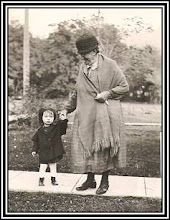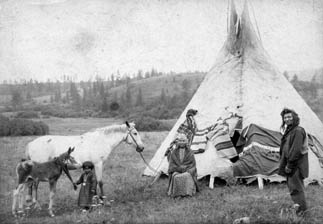 A hut up on the Riesachsee, a high mountain lake where Aloisia went each summer to live in a small hut and take care of the cattle.
A hut up on the Riesachsee, a high mountain lake where Aloisia went each summer to live in a small hut and take care of the cattle.Chapter One: The Sennerin
Aloisia Knaus was born in the little village of Birnberg, not far from the town of Schladming, in Steiermark, Austria, on July 2, 1856. “Steiermark is one of Austria’s crown jewels,” writes my mother Beverly, “with towering mountains, high alpine lakes, forests, and meadows abloom with wildflowers in the summer. When I first visited there in 1951, I realized that what I saw was what I imagined as I read the book Heidi as a child.”

A map of Steiermark, Austria, showing its general location. Aloisia was born near the town of Schladming, on far left of pink part of map.
“Grandmother didn’t tell me much about her childhood and life in Austria and most of what I know I remember hearing from my father. She did have several brothers, the youngest of which I was able to visit in 1951.”
 The seal of the province of Steiermark, Austria
The seal of the province of Steiermark, Austria“Indeed, Aloisia as a child and young woman had experiences similar to those of Heidi, who lived with her grandfather in a chalet on an ‘Alm’ in the Alps of Switzerland. As a young woman, Aloisia was a ‘Sennerin’—a person who lived during the summer on the high mountain pasture, caring for the animals, milking them and turning the milk into butter and cheese. Periodically, one of her brothers would make the trek from Birnberg to the Alm, bringing supplies for her use and carrying the dairy products down to Schladming to the market.”

“When I was in Austria as a student in 1951-1952,” Beverly remembers, “my father came to visit the Old Country and we were able to visit the Alm in the mountains and indeed, located the very hut where she lived, summers, as a girl. Imagine a cup-shaped area surrounded by mountain peaks and carpeted in lush grass splattered with flowers. In the bottom of the cup is a small lake and scattered around the area are several other similar huts owned by other animal keepers. And Johanna, Grandmother’s niece with whom she kept in touch by letter after her migration to the United States, was our guide for the visit to the Alm and its lake, the Riesachsee. Although she was in her seventies at the time, she could still climb the steep mountain path to the Alm. She was able to help us find the very hut which had once belonged to the Knaus family and we were even invited in by the occupant and shown around. What I remember is a cozy little cabin on a hill slope, with the animals sheltered in the lower part dug into the hillside. One room on the main floor was the kitchen, sleeping and eating room, and another space next to it was another ‘kitchen’ with a bigger stove and equipment for making the butter and cheese.”

A teenage girl wears the traditional dirndl of Steiermark, Austria. As a teenager, Aloisia would have worn this functional outfit.

A modern photo of the Riesachsee, where Aloisia spent her summers as a semmerin. Note the small wooden huts around the edge of the lake.
“When the animals, probably cattle, were driven from Birnberg up to the Alm Aloisia carried a beehive on her back.
In addition to watching the cattle, Aloisia tended the beehives and harvested the honey. She carried the beehive up to the Alm on her back each summer.
“Many years later,” remembers Beverly, “we hiked up to the Riesachsee again. It had changed considerably from the way it was in 1951, with a restaurant and ‘Jausenstation’ where one could buy drinks and spend a pleasant sunny summer afternoon. At that time, one still had to walk up the mountain trail to get there.”
 Modern hikers enjoy the peaceful scenery at the Riesachsee
Modern hikers enjoy the peaceful scenery at the Riesachsee A contemporary photo of the town of Schladming, Austria
A contemporary photo of the town of Schladming, Austria“As a young woman, Aloisia probably worked in one of the shops in Schladming. She sang in the choir of the Protestant Church—the ‘evangelische Kirche’—in Schladming, still in use today.
 The Protestant Lutheran Church in Schladming that Aloisia attended
The Protestant Lutheran Church in Schladming that Aloisia attended“Austria is a Roman Catholic country, but this part of Steiermark has a considerable number of Protestant churches. I believe the reason for this is that the difficult mountain terrain kept this area relatively isolated during the Counter-Reformation, thus blunting its thoroughness,” writes Beverly.




No comments:
Post a Comment